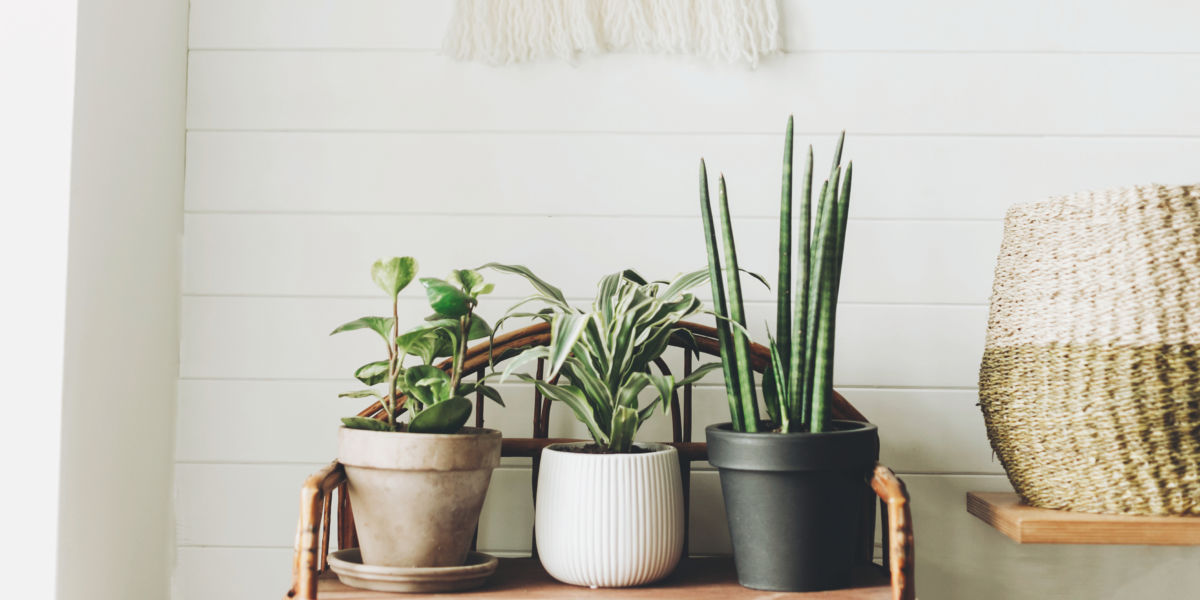Photo by Santia2 / Getty Images
Scale is a (mostly) immobile sucking insect that actually comprises about 8,000 species. These jerks always attack my lime trees and let me tell you they are a PAIN to get rid of. Scale can be so tenacious that some people would rather just toss an infested plant into the yard debris bin than attempt control measures.
Mealybugs

Photo by eyen120819 / Getty Images
These insects are closely related to scale (they’re in the same Neococcoid insect category), but unlike scale, these mofos can move. They’re sucking insects that suck in more ways than one, and like aphids, can attract ants.
Signs of a Problem: Similar to scale, look for honeydew and spots of sooty mold. Plants will be stunted and leaves can curl when infested.
Appearance: Like little puffs of white cotton, these small insects are covered in a powdery, waxy coating.
Weapon of Choice: Fortunately, these soft-bodied scoundrels are pretty easy to hit with insecticidal soap, but this will be more effective if you dab them with rubbing alcohol to break down the insects’ waxy coating. Ladybug larvae will also happily munch mealybugs, if you don’t mind having them crawling around your house.
Fungus Gnats

Photo by Henrik_L / Getty Images
I hate to break it to you, but if you see tiny gnats flying (or, often, lazily walking) around your houseplants, it’s probably because you’re overwatering. That said, terrariums and some plants—like begonias, ferns, and prayer plants—require more moisture and the gnats are just going to show up, flying into your face and being as annoying as, well, gnats.
Signs of a Problem: Tiny gnats buzzing around your plants are the clear indicator of trouble. As far as houseplant pests go, fungus gnats don’t typically pose a real problem to healthy plants; their larvae typically stick to the fungus in the soil. However, some will nibble on roots if they happen to be in the vicinity.
Appearance: Tiny (1-2 mm long) gray flies with gangly legs and a propensity for getting up human noses.
Weapon of Choice: Yellow sticky traps are typically pretty effective (adult gnats are attracted to the color yellow), as are small carnivorous plants like sundew (Drosera). Allowing soil to dry thoroughly between waterings is your best bet, but you can also treat soil annually by watering with insecticidal soap.
Whiteflies

Photo by Jess311 / Getty Images
Whiteflies have a very accurately descriptive name. Like many other houseplant pests, these party-poopers suck the literal life out of your plants. Worst of all, they can fly.
Signs of a Problem: You’ll usually notice the flies before you notice your plants suffering much, but if your houseplant’s leaves start looking pale and limp, whitefly might be to blame.
Appearance: As the name implies, these little buggers are small (1-2 mm long), white flies that tend to swarm in small flurries or congregate on the undersides of leaves.
Weapon of Choice: Like fungus gnats, these flying houseplants pests will be drawn to yellow sticky traps. Insecticidal soap is also effective for moderate infestations.
Spider Mites

Photo by jopstock / Getty Images
These little so-n-sos tend to come after my Alocasia (and the Brugmansia I brought indoors to overwinter), and they’re very hard to get rid of! They love plants in the arum family (which just happens to be the plant family that the majority of houseplants come from, NBD!), nightshades, and the cannabis family (they hit my hops really hard last year). Fighting them is tricky. They’re tiny, for one thing—barely visible—and they use this to their advantage. They’re micro in a macro world, and can hide easily.
Signs of a Problem: Leaves start to yellow and show tiny, brown-pinprick dots, then fine webbing will begin to show up on the leaves and stems. If you look very closely, you can see very tiny mites walking around on the webs.
Appearance: Tiny (about 1/2 mm), reddish-brown, and forming fine webs.
Weapon of Choice: They hate humidity, so mist your plants daily, set them on a tray of watered pebbles, and give them a shower once a week or so, taking care to wash off the webs. Then spritz liberally with insecticidal soap and apply neem oil to prevent re-infestation. If you have a large infestation on multiple plants, you can also try the predatory mite Phytosieulus persimilis, but systemic pesticides don’t work well because it doesn’t take long for spider mites to develop a resistance.








